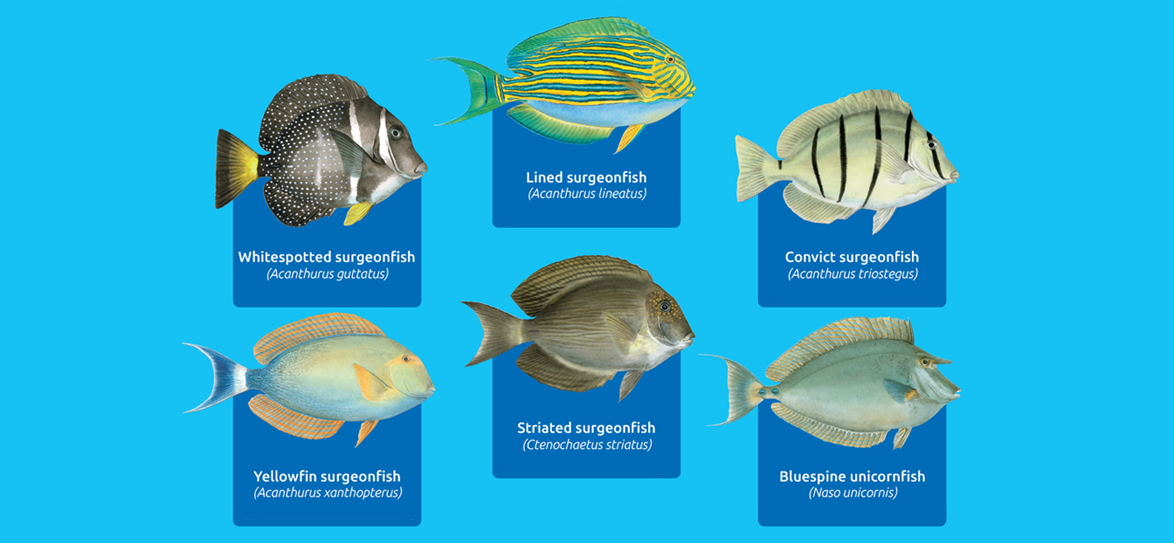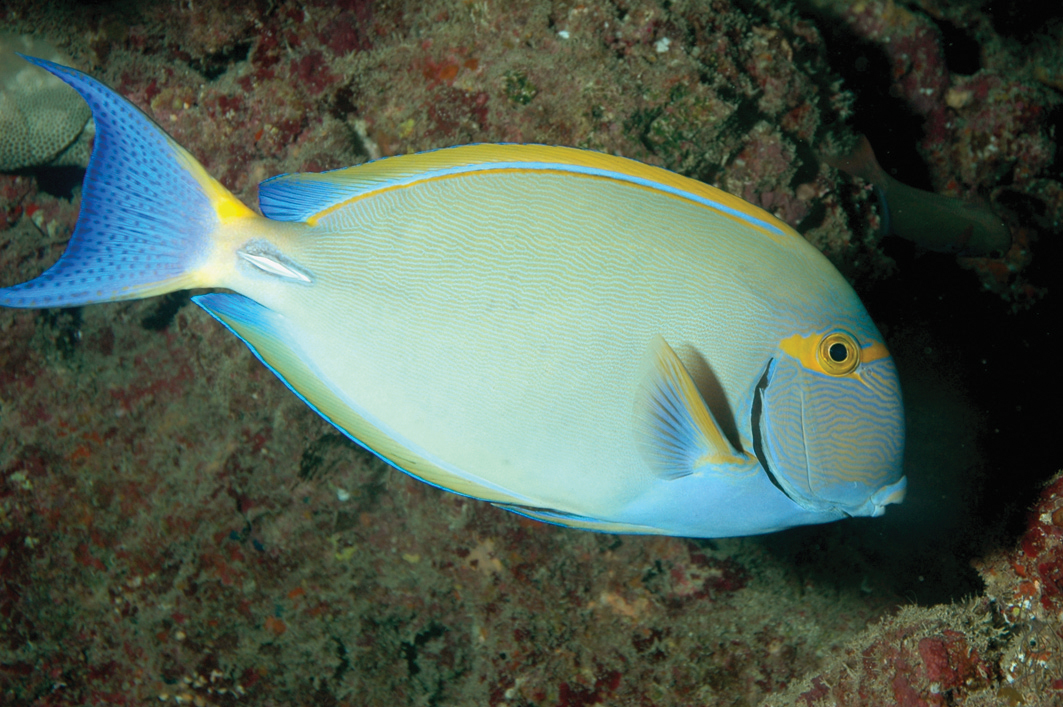Image: © Matthieu Juncker
To gain access to full information on surgeonfish, download the information sheet produced by the LMMA Network and SPC.
If you have noticed a decline in your catches or are concerned about surgeonfish populations, here are some priority actions the community can consider in addition to national regulations:
Fish smart rules
Temporary bans
A ban on fishing during the peak of the spawning season, which may require a number of short closures when surgeonfish aggregate. If the species of concern forms spawning aggregations at the time of the full moon, banning fishing for a few days on each side of the full moon may be sufficient;


Tabu areas
A ban on fishing at known spawning areas or sites, which may be at the outer edges of fringing reefs or near reef passages.
Good to know: juvenile surgeonfish will drift out of tabu areas
Seasonal bans and tabu areas would give some protection to breeding adults. And, as the small larval forms produced drift in the sea for 2 to 3 months, they are likely to settle on surrounding reefs, including fishing areas, particularly those in down-current places. An additional community action could include banning the use of fine-mesh nets to protect juvenile fish.
Fishing methods
In many Pacific Island coastal fisheries, surgeonfish are the most important group of fish taken for food. They are usually caught by the use of spears, nets and traps. Juveniles often settle out on reefs in massive numbers and these are sometimes caught with fine-mesh nets.
Although they are plant eaters, some surgeonfish can be caught on baited hooks. Some surgeonfish in particular areas are believed to be responsible for ciguatera fish poisoning (see Glossary in the Guide to Information Sheets).
Many surgeonfish are caught as they gather in large groups to breed (in spawning aggregations). Fishing in this way is destructive as these breeding fish are responsible for producing small fish, many of which will grow and be available to be caught in future years.
Management measures in the region
National fisheries authorities in several Pacific Islands have imposed minimum size limits for surgeonfish (for example, 20 cm length from the tip of the mouth to the middle of the tail) although in most cases the particular species to which the regulation applies has not been stated. To be effective, size limits should be applied to individual species.
To ensure that catches of surgeonfish are sustainable it is essential to protect breeding adults. Community-managed fish reserves (no-take areas) may allow surgeonfish to grow but, as most species migrate to spawning sites, these would not protect reproducing fish.
Many fishing communities will have some local knowledge of the timing and location of spawning aggregations, however, which makes certain management options possible.
Some species

Acanthuridae is the fish family of surgeonfish, tangs, and unicornfish. The family includes about 80 species that live in tropical seas. All surgeonfish have one or more sharp spines or blades on each side of the tail.
Most surgeonfish are medium sized (15 to 40 cm) although some unicornfish reach lengths of more than 1 m. Several species are important food fish including the convict surgeonfish, Acanthurus triostegus, as well as the lined surgeonfish, Acanthurus lineatus, and the striated surgeonfish, Ctenochaetus striatus.
Most surgeonfish are associated with coral reefs and often form very large feeding schools around corals and rocky outcrops in shallow water. The key habitats that are crucial in the life-cycle of many surgeonfish are the areas where they gather to breed (the spawning aggregation sites). Surgeonfish have small mouths with a single row of teeth used to scrape plants off corals and rocks.
All surgeonfish have separate sexes and most medium sized species have similar life cycles. The convict surgeonfish, used here as an example, commonly reaches lengths of 17 cm (with a maximum length of 27 cm) and lives for more than 4 years. Males and females reach reproductive maturity at different sizes; females are able to reproduce at close to their maximum size, at an age of about 2 years.
Most surgeonfish gather in large schools to breed (in spawning aggregations) when waters become warmer and often at times of the full moon. The spawning areas or sites are often at the outer edge of fringing reefs or near reef passages.
At the spawning site, each female releases millions of very small eggs into the water and these are fertilised by sperm released by males. The masses of eggs and sperm appear as white clouds in the water and are fed upon by many fish. The fertilised eggs develop into small forms (larval stages) that drift in the sea for 2 to 3 months. Less than one in every thousand of the small floating forms survives to become a young fish (juvenile) about 3 cm in length.
And less than one in every hundred juveniles survives the 2 years or so that it takes to become a mature adult.
Related resources

To gain access to full information on surgeonfish, download the information sheet.

